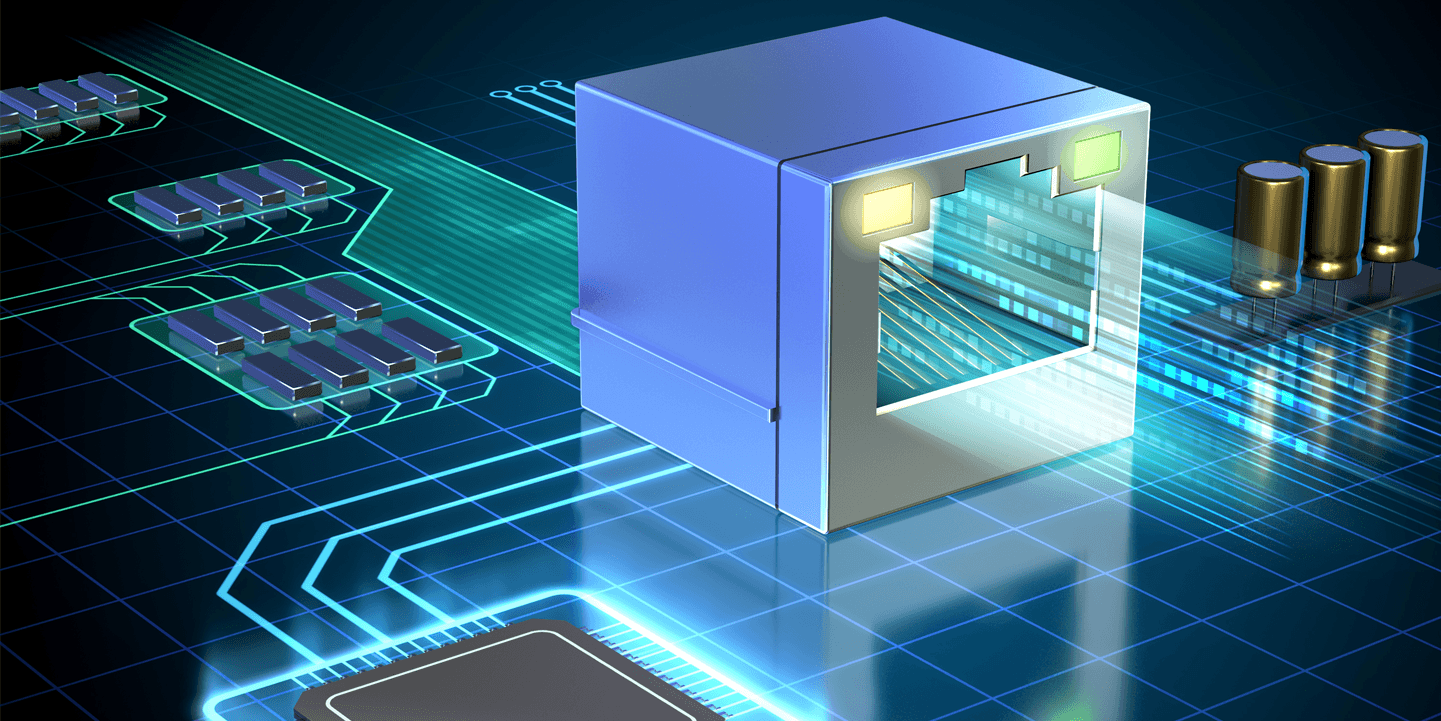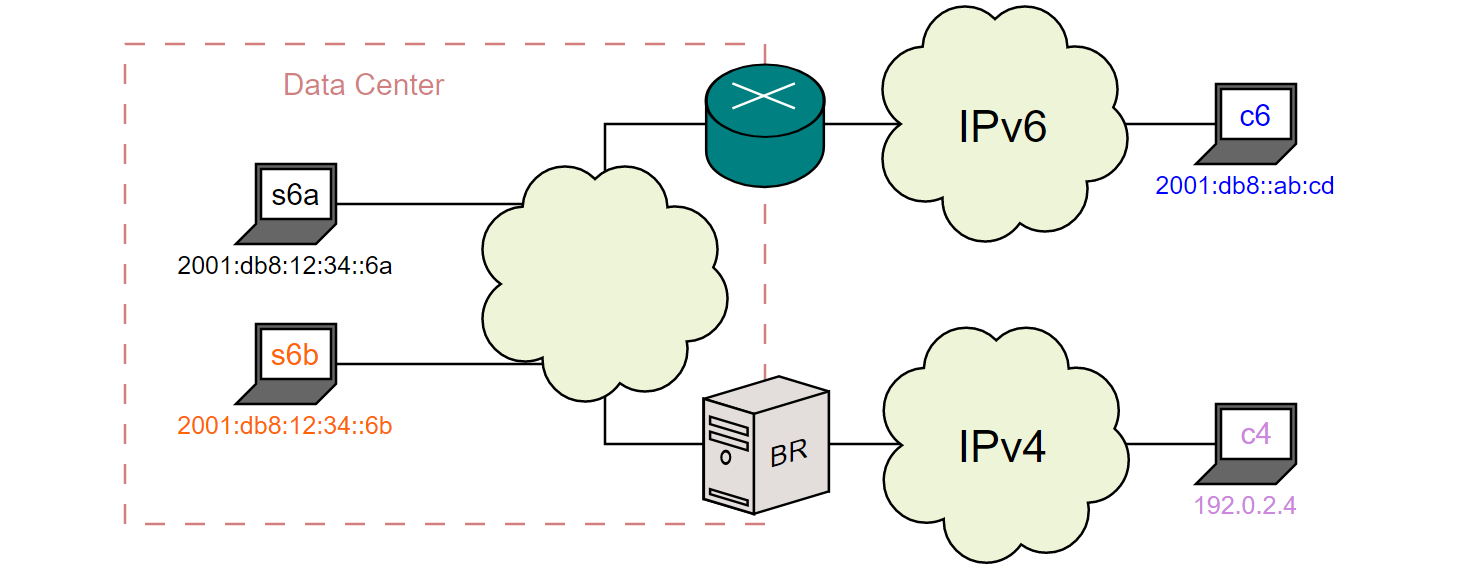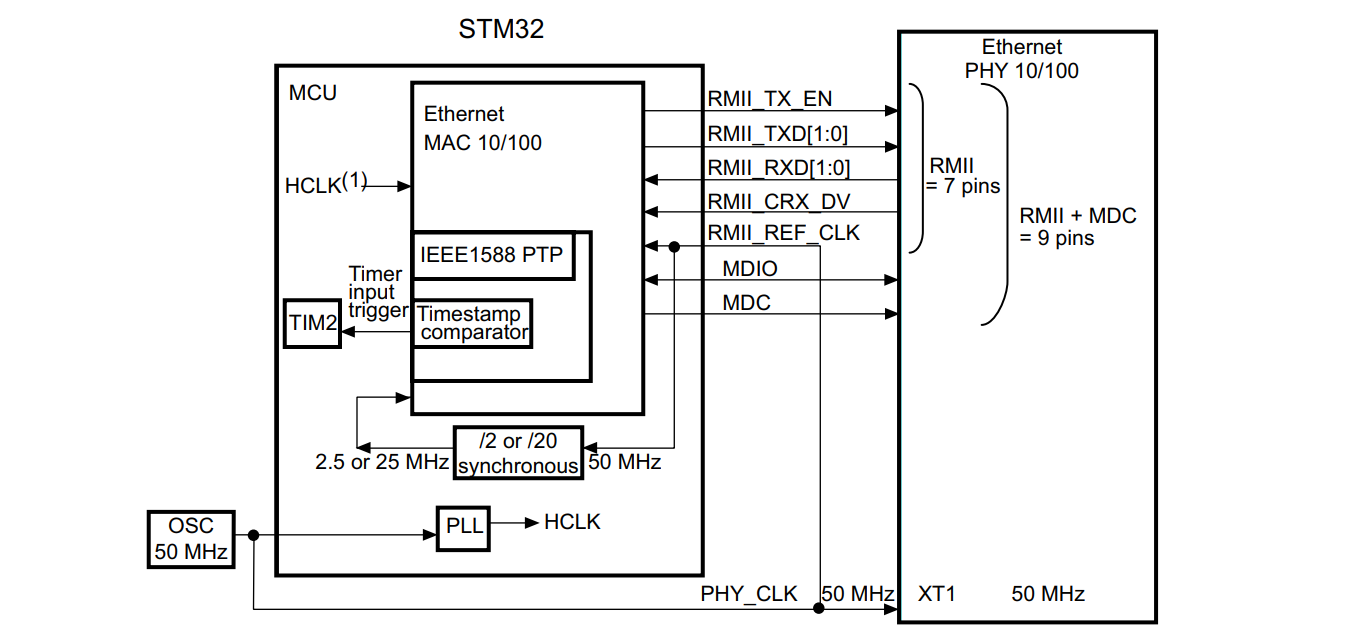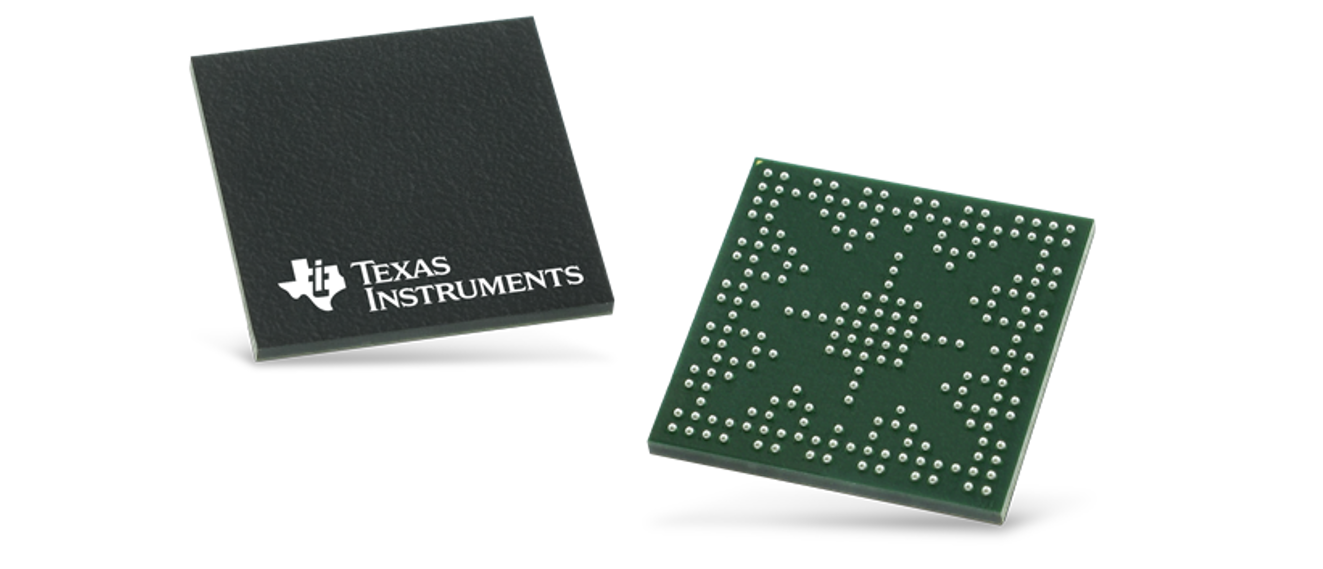
Small MCUs are the workhorses of most IoT products for the consumer level and some industrial applications. If you need a small, low-cost chip with moderate compute power and a range of speeds, you’ll see plenty of options for MCUs on the market. MCUs also come with plenty of low-speed interfaces to other peripherals, making MCUs flexible platforms for most IoT products.
When we think of IoT products or other embedded devices, we often think of them connecting via Wifi or Bluetooth. This might be true at the consumer level, such as for wearables and smart home products. However, Ethernet isn’t going anywhere soon, and plenty of commercial and industrial applications will make copious use of Ethernet for communication. There is also power over Ethernet (PoE) to consider, which gives designers a useful option for powering their embedded devices.
If you want to use Ethernet for communication between your embedded device and a larger network, you’ll need to integrate the MAC/PHY layers into your device so that you can properly interface with a standard RJ-45 jack. If you want to minimize the size of your system, you can use an Ethernet MCU with PHY and MAC support integrated into the controller. Here are some of the benefits of going this route and some components you can expect to find on the market for your system.
Selecting Ethernet MCUs with a PHY/MAC
The first thing for new Ethernet designers to note is this: MCUs do not include the Ethernet PHY layer integrated into the chip. That being said, some MCUs do include the MAC interface necessary to wire directly to the PHY layer (i.e., magnetics circuits, Bob Smith termination, and then the connector). You could also route directly to an RJ-45 with integrated magnetics (magjack).
If you’ve opted to use an MCU with integrated Ethernet PHY/MAC support, what level of performance can you expect from these components? Given the broad range of features in any MCU, the expected level of performance and feature set depends on the footprint you can accept and the cost you’re willing to pay. You may need to sacrifice some other features if you want to use an MCU with Ethernet. Some of the components we’ll show below still include all of the standard interfaces you would expect in most MCUs, including:
UART, I2C, SPI, or other bus interfaces
USB 2.0 or 3.0 with an integrated host interface
Plenty of GPIOs to interface with other ICs
PWM outputs with adjustable duty cycle
Important Specifications
While we can’t generalize specifications for every MCU with Ethernet, we can see some general trends in these devices from leading component manufacturers:
Cost: The price of an MCU with Ethernet can vary greatly depending on the number of features and I/Os you need. In general, for every Wifi/Bluetooth-enabled MCU, there is another MCU with Ethernet that has similar cost and I/O count.
Footprint: These MCUs come in standard surface-mount footprints (QFN, TQFP, etc.) that are close enough to other MCU footprints with comparable specs. Some components come in a VFBGA to save space on small boards.
Clock speed and Base-T standard: These two points are generally related as the data rate in the Ethernet is limited by the controller’s clock speed. An MCU with Ethernet basically integrates a transceiver into the component. Typical components are fast enough to support 10/100 Ethernet over copper with an integrated PHY and MAC.
Other interfaces: You’ll be hard-pressed to find an MCU with Ethernet that doesn’t have the standard set of low-speed interfaces (plenty of GPIOs + SPI/I2C/UART). Some of the higher-end components can support USB, CAN, or other interfaces.
With all this in mind, there are some applications where it is best to ditch wireless connectivity and just go for Ethernet. Some of the advantages include simplicity, long range without wireless access points, and most importantly, cost and size. You can also take advantage of IEEE 1588 precision time control over MII/RMII routing for real-time data applications, which nicely eliminates the latency of Bluetooth or Wifi. Finally, this reduces the overall component count by eliminating an external MAC chip for interfacing with the PHY layer.
There are other points to consider if you’re designing an embedded device that will include Ethernet. Aside from the need for other high-speed interfaces like USB, there is also the need to consider how your device will integrate into a larger network topology as this will influence your MCU choice. Some Ethernet MCUs can’t be used to serve a web interface to users over the internet, while others can be used to build an embedded server, gateway, or access point on a larger network.
Network Infrastructure and IP Addressing
The IP address market started getting thin about 20 years ago, with the crop of traditional IPv4 addresses starting to run low. Although exhaustion of IPv4 addresses was anticipated in the late 1990s, the last IPv4 address wasn’t allotted until 2012, and a new IPv6 standard was adopted in 2017. In addition to growth in the internet era, a major driver of the move to the new IPv6 format is the growth in low-cost embedded devices that need to connect to the internet (either directly as a server or indirectly via a router).

Network topology with IPv4 and IPv6 devices with an IPv6 address.
A number of MCU modules and components can support this type of web-integrated architecture over Ethernet or wireless by connecting to a modem. Now with more devices integrating on-board cellular communication through a modem, end client devices may not need Ethernet unless they are connecting to an on-premises and need a very reliable connection (office, factory floor, etc.).
MCUs that include an Ethernet PHY/MAC with IPv6 support will find applicability in any of the same applications as IPv4. There is a myth that IPv6 is not backward compatible with IPv4, but this compatibility is handled with Network Address Translation (NAT). There is a defined format for an IPv6 address containing an embedded IPv4 address and the device’s MAC address, which specifically enables backward compatibility through NAT. This means that you can configure your Ethernet-compatible embedded device as an upstream server/router/access point as long as it can support this translation.
Example MCUs with Ethernet
If you’re new to embedded design for industrial systems, home automation, or other commercial areas, you might have glossed over the available options for MCUs that support Ethernet. Quite a few of the major IC manufacturers offer Ethernet-capable MCUs in their popular product lines. Here are some of the MCU products you’ll find on the market that support Ethernet.
STMicroelectronics, STM32F40x
The STM32F40x line is part of STMicroelectronics’ very popular STM32 family of MCUs. These components support more intense computing tasks (32-bit, 168 MHz) and can interface with a broad array of sensors thanks to their 3 high speed ADCs (2.4 MSPS, or 7.6 MSPS with interleaving). Some products also include DACs for tasks like arbitrary waveform generation. These components are available up to 176 pins for flexible footprint and IO count options while still supporting common low-speed interfaces, as well as USB.

STM32F4x Ethernet MCU with PHY layer block diagram. Source: STM32F4x datasheet.
Microchip, PIC18F97J60
The PIC18F97J60 from Microchip is a low-cost option that provides integrated 10/100 Ethernet alongside support for RS-485, RS-232, and LIN/J2602, and other interfaces for industrial applications. The advantage of this MCU is that it offers all the standard interfaces you would expect in an MCU without overloading on GPIO pins at a cost of under $10 per unit. You can route directly to an RJ-45 with integrated magnetics, giving a simple way to build out a new IoT product with Ethernet. The downside is the slow clock rate (derived from a 25 MHz reference) and 8-bit processing, so it’s best for lightweight embedded computing.
This MCU is a good choice for industrial applications thanks to the RS-485/RS-232 interfaces. It can also be wired to support applications like half-bridge or full-bridge motor control with its PWM driver outputs. This configuration the PWM output from the MCU with external FET drivers, which then drive the load by enforcing a phase difference on the output PWM signals. By adding a feedback loop with a precision sense resistor, the same configuration can be used to implement a control algorithm in power converters or other systems requiring regulated driving of a load at high current.

PIC18F97J60 Ethernet MCU half-bridge and full-bridge driver configuration. Source: PIC18F97J60 datasheet.
Texas Instruments, MSP432E4x
Part of the popular MSP432 family, the MSP432E4x from Texas Instruments are 32-bit MCUs with integrated Ethernet support. This component comes in two varieties. The MSP432E401Y supports CAN and includes 1 MB integrated Flash with 256 KB RAM. The MSP432E411Y has the same specs but also includes support for TFT LCD screens. Other integrated features include 2 12-bit ADCs (2 MSPS), encryption support, 3 analog comparators, and 16 digital comparators. Finally, this MCU can operate with an IPv4 or IPv6 address (TCP, UDP, and ICMP).

MSP432E4x NFBGA package and land pattern. Source: Texas Instruments.
Other Components You Need for Embedded Devices
Embedded systems don’t stop at the MCU and networking capabilities. Designers may need other components to make up for anything lacking in an MCU with Ethernet. When you need to add more hardware functions for critical features in your system, take a look at some other components you might need for a new IoT product:
No matter where your new product will be deployed, you can find an Ethernet MCU with PHY and MAC support using the advanced search and filtration features in Octopart. When you use Octopart’s electronics search engine, you’ll have access to up-to-date distributor pricing data, parts inventory, and parts specifications, and it’s all freely accessible in a user-friendly interface. Take a look at our integrated circuits page to find the components you need.
Stay up-to-date with our latest articles by signing up for our newsletter.